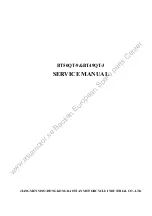
6
PREPARING TO RIDE
Whatever helmet you
decide on, keep it securely
fastened on your head
when you ride. Otherwise,
if you are involved in a
crash, it’s likely to fly off
your head before it gets a
chance to protect you.
Eye and Face
Protection
A plastic shatter-resistant
faceshield can help protect
your whole face in a
crash. It also protects you
from wind, dust, dirt, rain, insects and
pebbles thrown up from cars ahead.
These problems are distracting and
can be painful. If you have to deal
with them, you can’t devote your full
attention to the road.
Goggles protect your eyes, though
they won’t protect the rest of your face
like a faceshield does. A windshield
is not a substitute for a faceshield or
goggles. Most windshields will not
protect your eyes from the wind. Neither
will eyeglasses or sunglasses. Glasses
won’t keep your eyes from watering,
and they might blow off when you turn
your head while riding.
To be effective, eye or faceshield
protection must:
I
Be free
of scratches.
I
Be resistant
to penetration.
I
Give a clear view
to either side.
I
Fasten securely,
so it does not
blow off.
I
Permit air
to pass through, to
reduce fogging.
I
Permit enough room
for
eyeglasses or sunglasses, if needed.
Tinted eye protection should not be
worn when little light is available.
Clothing
The right clothing protects you in
a collision. It also provides comfort,
as well as protection from heat, cold,
debris and hot and moving parts of the
motorcycle. It can also make you more
visible to others.
I
Jacket and pants
should cover
arms and legs completely. They
should fit snugly enough to keep
from flapping in the wind, yet
loosely enough to move freely.
Leather offers the most protection.
Sturdy synthetic material provides
a lot of protection as well. Wear
a jacket even in warm weather to
prevent dehydration. Many are
designed to protect without getting
you overheated, even on summer
days. Some riders choose jackets
and pants with rigid “body armor”
inserts in critical areas for additional
protection.
I
Boots or shoes
should be high
and sturdy enough to cover your
ankles and give them support. Soles
should be made of hard, durable,
slip-resistant material. Keep heels
short so they do not catch on rough
surfaces. Tuck in laces so they won’t
catch on your motorcycle.
HELMETS












































